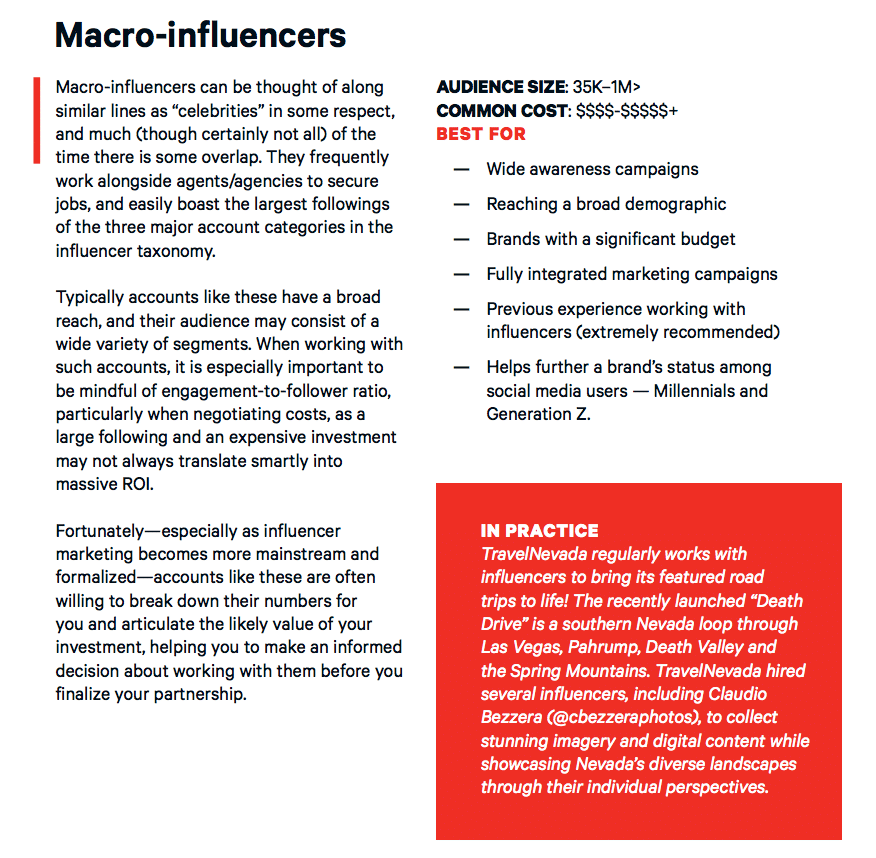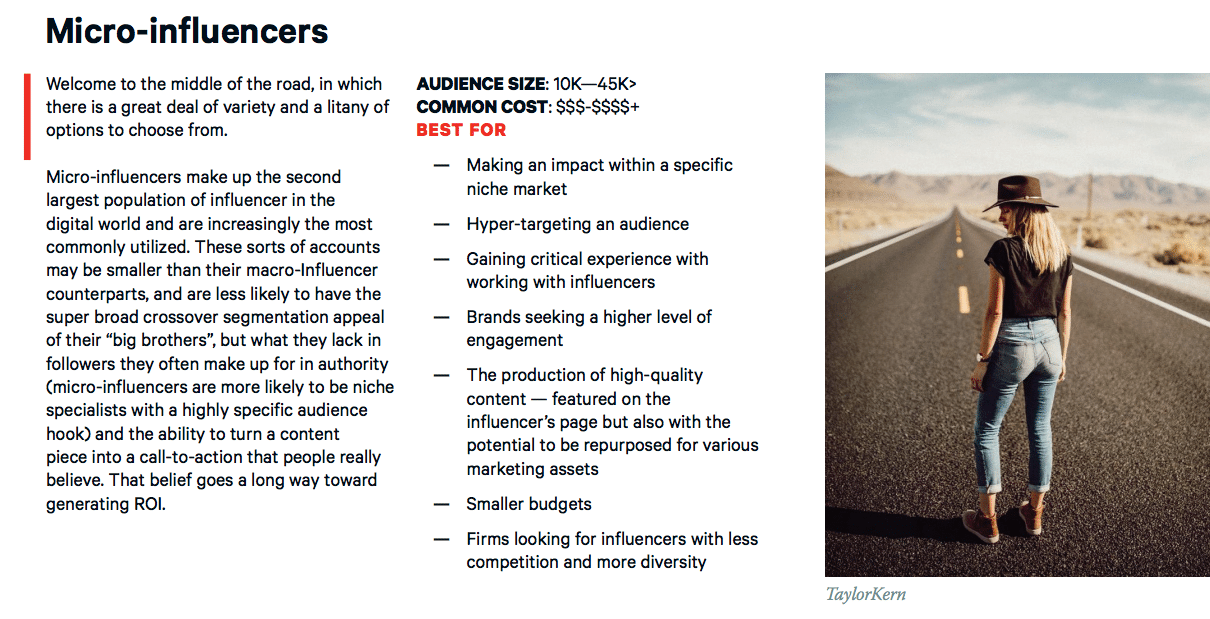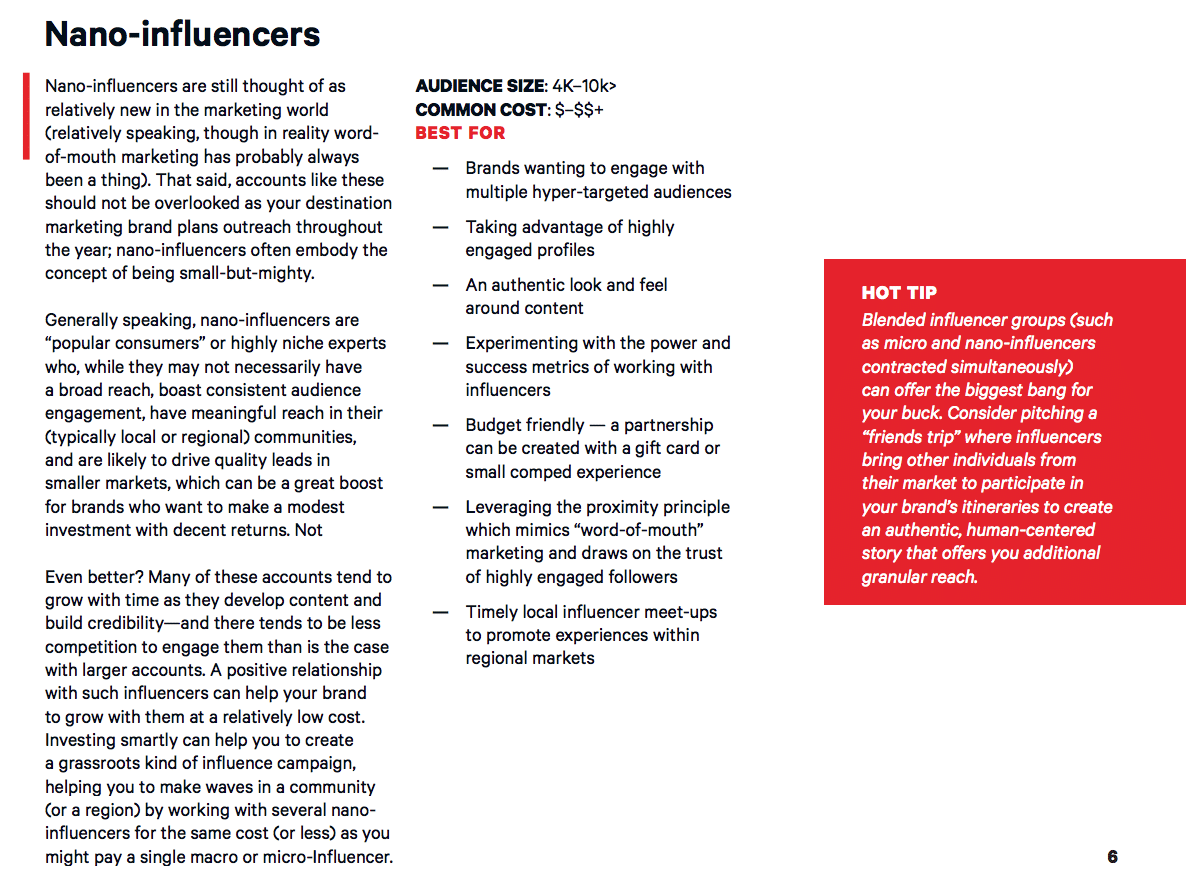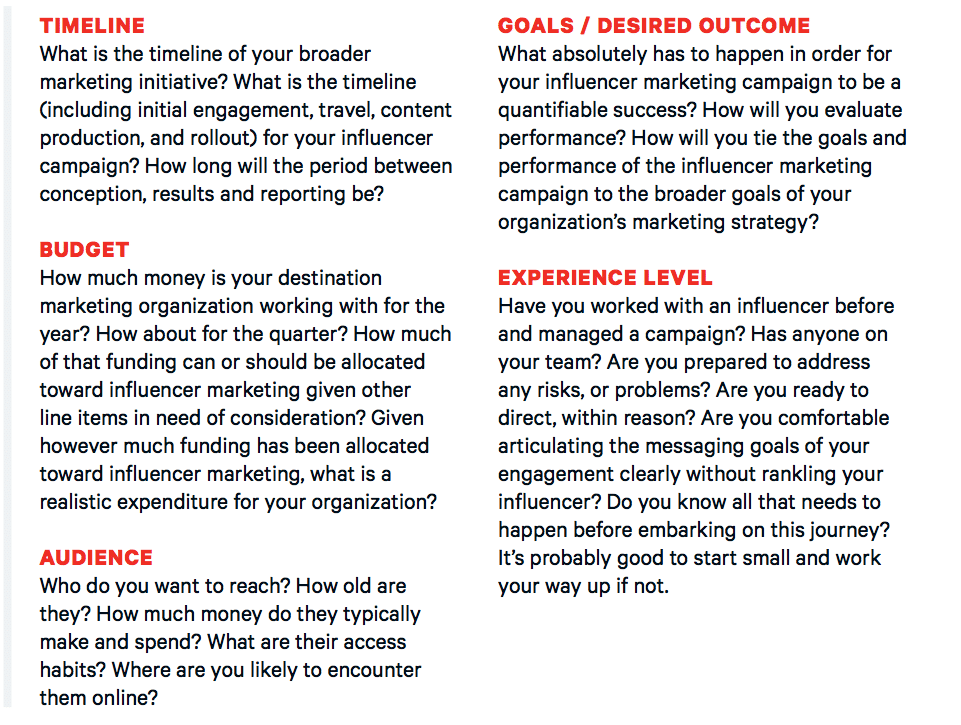Influencer marketing has dramatically changed—you might even say revolutionized (yep, we said it)—PR’s paid media game, and in the process created a whole new slew of metrics to keep up with. But in addition to the new-ness of the practice, quantifying some of these metrics for success continues to be a challenge for some industries.
Though many travel brands, for example, regularly employ social media influencers, new research from travel and tourism-focused integrated creative, digital and PR firm The Abbi Agency finds that there is currently no standard way to carry out and measure the success of social media influencer campaigns, specifically with Destination Marketing Organizations (DMOs). Additionally, as more new influencers enter the fluid market and become social media sensations seemingly overnight, the ever-changing and increasingly saturated field has become harder to navigate for both DMOs and influencers.
The firm’s new study reveals that DMOs and influencers possess disparate opinions on how to navigate and measure the success of social media influencer campaigns
The study suggests that unclear communication channels, muddled expectations and creative differences are directly affecting the ROI of these marketing campaigns.
The survey sought to understand better ways to leverage influencer marketing by asking travel influencers what DMOs are doing right and what they’re doing wrong. The results of the study suggest that as DMOs attempt to replicate the powerful proximity principle of word-of-mouth-marketing, they may be undermining influencers’ hard-earned authentic relationships with their audiences. In the study, influencers repeatedly emphasized that DMOs must stop undermining influencers’ efforts by improving communication, setting forth clearer expectations and working to be more empathetic and flexible.
“Social media influencers are disrupting the travel and tourism marketing industry, and marketers are struggling to develop mutually-beneficial relationships with these influential content creators,” said Abbi Whitaker, president and co-founder of The Abbi Agency, in a news release. “Travel influencers allow brands to personalize their destination with creative, relatable content. It is vital that travel and tourism marketers capitalize on the social media marketing trend in order to reach highly engaged and trusting audiences, while also respecting influencer-audience relationships.”
Here are three key findings that illustrate the current climate of the travel influencer marketing field, accompanies by influencer posts addressing the issues.
1. Unclear communication channels are diminishing the potential of influencer-DMO relationships
From building itineraries and negotiating influencer contracts to implementing travel considerations and booking reservations, working to curate hosted trips for a travel influencer campaign can lead to a contentious string of emails and phone calls. As marketing teams work through the complicated dynamic, they may lose sight of the importance of incorporating empathy and appreciation in their relations.
The research found that many influencers are frustrated by a lack of clarity and empathy from DMOs that leads to a disintegration of trust in the relationship. From the study, it is apparent that DMOs have a tendency to disregard the amount of planning, work, time and resources that it takes for an influencer to create a single post. Influencers feel entitled to earning fair pay, not just trade for their work-intensive content, but many say that they regularly face push back from DMOs when attempting to garner proper and timely compensation. The contentious communication may result from a lack of clarity, empathy and trust.
“Typically, budgets [are an issue]. There is an incredible amount of work that goes into what we do, and many brands don’t understand the time spent behind the scenes or the amount of money it costs to acquire the equipment required to produce compelling content. What’s more, most photoshoots require at least two people. (In an agency, such work would require a creative director, hair and makeup, lighting, sound, wardrobe, photographer, etc.) I do it all. So finding the budget for an assistant to attend the campaign has proven to be difficult in the past.” — @travelfreak
2. Muddled expectations reveal DMOs’ lack of understanding when it comes to influencer marketing campaigns
According to the study, there is a substantial gap between the performance metrics that are deemed valuable by influencers and those that are acceptable to DMOs. Confusion between both parties results when DMOs fail to produce contracts with clear metric specifications. The study points to the reality that DMOs aren’t exactly sure which metrics to use when measuring the success of an influencer campaign.
Findings suggest that influencers prefer to share KPIs that are easiest to measure. Influencers commonly use page views, likes and conversions to measure engagement. However, these metrics don’t always translate to the exact goals of the destination. DMOs must decide which success metrics will most accurately predict an increase in visitors to the region, or in other words “heads in beds.”
Influencers emphasized that clear and accurate contracts are vital to establishing a foundation of understanding and trust. Contracts should include metric specifications in addition to granular details like content rights for images and the content’s lifetime on the platform.
“It’s hard to work with brands when they don’t outline exactly what they want. It’s great when companies outline exactly what they are expecting from me in the collaboration, whether that be specific number of posts on social or my own site, or whatever else they need. Freedom to create is amazing, but not if the brand walks away disappointed because I missed something they specifically wanted me to promote.” — @caitlinmcaninch
3. By withholding creative freedom from influencers, DMOs risk the authenticity of social media marketing campaigns
A successful influencer marketing campaign, according to influencers, requires a precarious balance of clearly defined guidelines and flexibility that allows room for the influencers to exercise their creativity. Influencers suggest that itineraries should allow time for curating photos, spontaneous exploration and any travel mishaps. DMOs should realize that though they may be experienced marketers, only social media influencers understand the effort that goes into developing a genuine connection with a highly engaged audience. Influencers are always aware that a single, inauthentic post can destroy the trusting relationship that they have worked so hard to develop with their audience.
“The biggest challenge I faced in working with brands is having to deliver projects under strict and highly limiting guidelines. I believe brands will see the best results with influencer marketing if they allow campaigns to be approached creatively while still meeting all deadlines and specifications.” — @hannahgpayne
Parameters to influence your influencer choices:
The Abbi Agency surveyed and interviewed 50 travel influencers, ranging from nano to macro-influencers, over a one-month period in Dec. 2018 and Jan. 2019.











